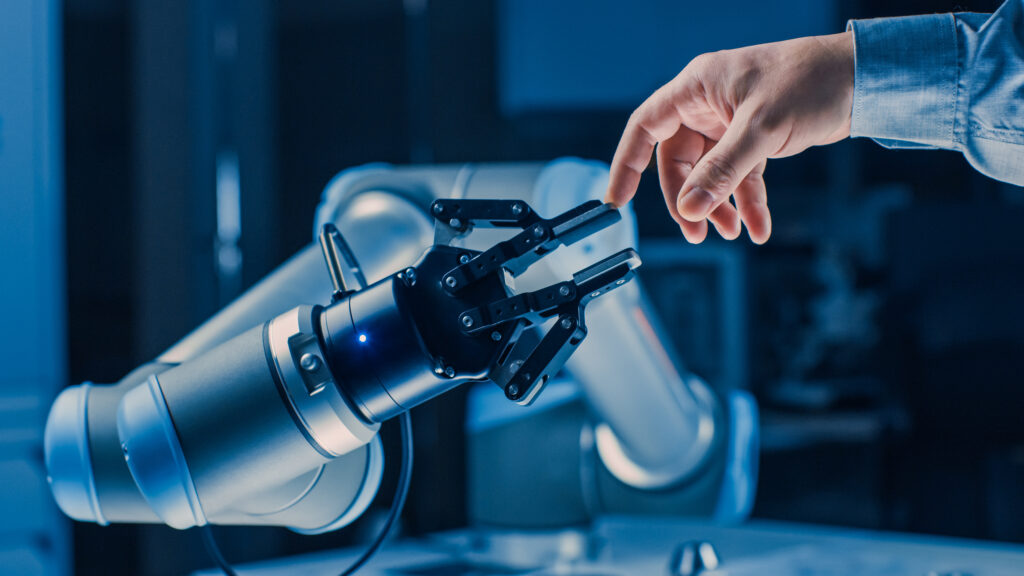As technology continues to evolve, factory automation services are experiencing unprecedented growth and transformation. At the forefront of this change are advanced robotics automation tools—solutions that streamline complex processes, enhance productivity, and redefine operational efficiency. These cutting-edge tools leverage innovations like artificial intelligence (AI), machine learning, and computer vision to perform tasks traditionally managed by humans, but with greater precision, speed, and reliability. In this article, we’ll explore the benefits, applications, and impact of advanced robotics automation tools across various industries.
What Are Advanced Robotics Automation Tools?
Advanced robotics automation tools are sophisticated machines and systems designed to handle repetitive, high-precision, or hazardous tasks within industrial settings. By integrating AI and machine learning, these tools can continually improve their performance and adapt to new operational challenges. When combined with factory automation services, they create scalable, flexible solutions that meet the growing needs of modern businesses.
Key Elements of Advanced Robotics Automation Tools
- AI and Machine Learning Integration: By analyzing real-time data, these tools learn and adapt, making them more effective at managing complex tasks or new production demands.
- Precision and Accuracy: They excel in applications where even the smallest error can lead to significant quality or safety issues, reducing the risk of defects and workplace injuries.
- Scalability: As your operations grow, these tools can be expanded or repurposed to accommodate higher production volumes and new market opportunities.
- Flexibility: Many advanced systems are designed for multi-purpose use—handling everything from assembly in manufacturing to inventory handling in warehouses.
Applications Across Industries
- Manufacturing: In manufacturing, advanced robotics automation tools handle assembly, welding, painting, and quality control. For instance, projects like the **Cargo Ramp Drill** or the **Wing Beam Drilling Machine** from Delta Sigma Company show how automated drilling and countersinking systems can streamline large-scale manufacturing processes.
- Logistics and Warehousing: Automated guided vehicles (AGVs) and robotic sorting systems efficiently manage inventory, order fulfillment, and deliveries. The **Stacker / Drill Automation** project by Delta Sigma Company illustrates how automation can dramatically reduce floor space while boosting throughput.
- Healthcare: From surgical procedures to diagnostics, precision and reliability are crucial. Advanced robots reduce the margin of error and free up clinical professionals to focus on patient care.
- Retail: Robotics automation supports inventory management, customer service, and in-store operations, improving the shopping experience and operational efficiency.
Real-World Factory Automation Services: Delta Sigma Company Case Studies
- Automating Older Equipment
The project **Automating An Old Drill & Rivet Machine** showcases how integrating new CNC capabilities with existing machinery can drastically reduce manual labor and production errors. - Special-Purpose Milling
Delta Sigma’s **MiniMill** demonstrates how a compact, easily portable milling solution can save time and money while producing precise, high-quality cuts. - Machine Vision Systems
For projects like **Using Machine Vision To Calibrate Countersink Depth**, cameras and vision systems assist in highly accurate measurements and adjustments, ensuring zero tolerance for errors.
These examples highlight the transformative power of factory automation services and illustrate how advanced robotics tools integrate seamlessly into complex industrial environments.
Benefits of Implementing Advanced Robotics Automation Tools
- Enhanced Productivity: Robots operate continuously without fatigue, significantly reducing cycle times and boosting output.
- Improved Quality: Automated systems maintain high accuracy standards, minimizing defects and the need for rework.
- Cost Savings: Although initial investments can be high, the long-term ROI often includes reduced labor costs, less downtime, and fewer errors.
- Operational Safety: Advanced robotics tools often take over dangerous or repetitive tasks, improving workplace ergonomics and reducing injury risks.
- Scalability and Flexibility: Systems can be reprogrammed or upgraded, making it easier to adapt to new product lines or market demands.
Frequently Asked Questions (FAQs)
1. What industries benefit the most from advanced robotics automation tools?
Virtually every industry can benefit—from manufacturing and logistics to healthcare and retail. Systems are customizable to fit specific sector needs.
2. How do advanced robotics automation tools differ from traditional automation?
Advanced tools often incorporate AI, machine learning, and computer vision, enabling higher levels of precision, adaptability, and self-learning capabilities than traditional automation.
3. What is the typical ROI for investing in advanced robotics automation tools?
ROI varies by industry, project scope, and complexity. However, many companies see significant improvements in efficiency, productivity, and quality within the first year, offsetting initial costs.
4. Are these tools difficult to implement?
Implementation can be complex, depending on the scale of the project. But with proper planning and expertise—such as that offered by Delta Sigma Company—businesses can quickly reap the rewards.
5. What are the main challenges in using advanced robotics automation tools?
Challenges include high upfront costs, the need for ongoing maintenance, potential workforce training requirements, and integrating new technology into existing workflows. Over time, the benefits typically outweigh the challenges due to enhanced efficiency and quality.
Conclusion
Advanced robotics automation tools are dramatically reshaping how businesses operate, offering greater efficiency, precision, and overall productivity. As these technologies continue to evolve, their applications will only grow—spanning a multitude of industries, from manufacturing to retail. By investing in robust factory automation services and embracing the innovations showcased in projects like the **Cargo Ramp Drill** or **Automating An Old Drill & Rivet Machine**, organizations not only optimize current operations but also position themselves for a future where automation is paramount.
If you’re ready to explore how advanced robotics automation tools can revolutionize your operations, Delta Sigma Company offers the expertise and proven track record to guide you at every step—from initial planning to full-scale implementation.








